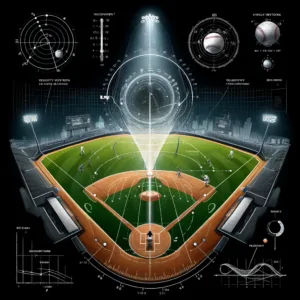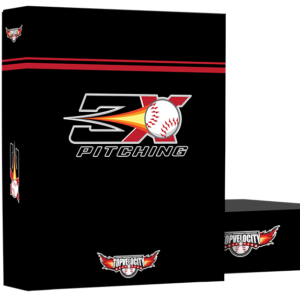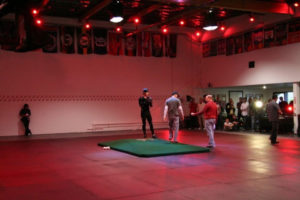 Are you searching for answers to the question, How much time do you have to hit a fastball? Check out the table below!
Are you searching for answers to the question, How much time do you have to hit a fastball? Check out the table below!
Welcome to the fascinating world of baseball, where speed is of the essence, and every mile per hour can make a significant difference. In this comprehensive guide, we'll delve into the dynamics of fastball velocity, exploring how different speeds affect the time it takes for the ball to reach home plate from a distance of 60 feet 6 inches. Through detailed analysis and expert insights, you'll gain a deeper understanding of the game's fundamental principles and the intricacies of pitching mechanics.
Exploring Fastball Velocity: How much time do you have to hit a fastball?
- Understanding the Basics: Before we dive into the specifics, let's establish a foundational understanding of fastball velocity. In baseball, the term "fastball" refers to a pitch thrown with maximum velocity, typically relying on the pitcher's arm strength and technique to achieve high speeds. The velocity of a fastball is measured in miles per hour (mph) and plays a crucial role in determining its effectiveness against opposing batters.
- Impact of Velocity on Performance: Velocity directly impacts the trajectory and reaction time of a fastball, influencing its ability to evade a batter's swing and reach the catcher's mitt with precision. Pitchers strive to increase their fastball velocity to gain a competitive edge on the mound, often employing various training techniques and mechanics adjustments to maximize their throwing speed.
Analyzing Velocity, Distance, and Time
 The Velocity-Distance-Time Relationship
The Velocity-Distance-Time Relationship
To better comprehend the relationship between fastball velocity, distance, and time, let's examine a series of pitches ranging from 60 to 100 mph. By calculating the time it takes for each pitch to travel the standard pitching distance of 60 feet 6 inches, we can gain valuable insights into the significance of velocity in the game of baseball.
Velocity Table Analysis: How much time do you have to hit a fastball?
The following table presents the velocity, distance, and time for fastballs ranging from 60 to 100 mph:
| Velocity (mph) | Distance (feet) | Time (seconds) |
|---|---|---|
| 60 | 60.5 | 0.6875 |
| 65 | 60.5 | 0.6346 |
| 70 | 60.5 | 0.5893 |
| 75 | 60.5 | 0.55 |
| 80 | 60.5 | 0.5156 |
| 85 | 60.5 | 0.4853 |
| 90 | 60.5 | 0.4583 |
| 95 | 60.5 | 0.4342 |
| 100 | 60.5 | 0.4125 |
The Importance of Timing and Accuracy: How much time do you have to hit a fastball?
- Pitcher-Batter Dynamics: In baseball, the interaction between pitcher and batter is a delicate balance of strategy and execution. A pitcher's ability to deliver fastballs with precision timing and accuracy can significantly influence the outcome of each at-bat, determining whether the ball is hit, missed, or fouled off.
- Maximizing Velocity for Impact: Pitchers continually strive to enhance their fastball velocity to challenge opposing batters and disrupt their timing at the plate. By mastering the art of speed and control, pitchers can maintain a competitive advantage and effectively control the tempo of the game.
Developing Velocity, Command, and Health with the 3X Pitching Velocity Program
 In the world of baseball, every pitcher aspires to increase their velocity while maintaining command and preserving their long-term health. The 3X Pitching Velocity Program offers a comprehensive approach to achieving these goals, emphasizing biomechanical efficiency, strength training, and injury prevention strategies. Here's how the program can help pitchers enhance their velocity, command, and overall well-being:
In the world of baseball, every pitcher aspires to increase their velocity while maintaining command and preserving their long-term health. The 3X Pitching Velocity Program offers a comprehensive approach to achieving these goals, emphasizing biomechanical efficiency, strength training, and injury prevention strategies. Here's how the program can help pitchers enhance their velocity, command, and overall well-being:
- Biomechanical Optimization: The foundation of the 3X Pitching Velocity Program lies in biomechanical analysis and optimization. By meticulously analyzing each pitcher's mechanics, the program identifies inefficiencies and areas for improvement. Through targeted drills and exercises, pitchers learn to optimize their kinetic chain, maximizing energy transfer from the lower body through the torso and into the arm. This enhanced biomechanical efficiency not only increases velocity but also promotes better command by improving the pitcher's ability to repeat their delivery with consistency.
- Strength and Power Development: A key component of the 3X Pitching Velocity Program is its emphasis on strength and power development. Pitchers engage in structured strength training routines designed to enhance explosive strength, rotational power, and core stability. By increasing overall strength and power, pitchers can generate greater velocity on their pitches while maintaining control and precision. Additionally, improved strength and stability contribute to injury prevention by reducing the risk of overuse injuries and enhancing durability throughout a long season.
- Pitch-Specific Training: Unlike generic training programs, the 3X Pitching Velocity Program incorporates pitch-specific drills and exercises tailored to the demands of pitching. Pitchers work on developing pitch-specific mechanics and mastering various pitch grips to optimize movement and deception. By honing their craft through specialized training, pitchers can not only increase velocity but also improve command by fine-tuning the release point and trajectory of each pitch.
- Injury Prevention Protocols: Injuries are a common concern for pitchers at all levels of the game. The 3X Pitching Velocity Program includes comprehensive injury prevention protocols aimed at reducing the risk of common pitching injuries, such as shoulder and elbow issues. Through targeted mobility exercises, soft tissue work, and recovery strategies, pitchers can maintain optimal health and durability throughout the season. By prioritizing injury prevention, pitchers can focus on maximizing performance without the fear of setbacks due to injury.
- Long-Term Development Focus: The 3X Pitching Velocity Program takes a long-term approach to player development, prioritizing sustainable gains in velocity, command, and health. Rather than seeking quick fixes or shortcuts, the program emphasizes gradual progress and continuous improvement over time. By instilling proper mechanics, training habits, and injury prevention strategies, the program equips pitchers with the tools they need for long-term success on the mound.
In conclusion, the 3X Pitching Velocity Program offers a holistic approach to developing velocity, command, and health for pitchers. By addressing biomechanics, strength training, pitch-specific skills, injury prevention, and long-term development, the program empowers pitchers to reach their full potential while minimizing the risk of injury and maximizing their longevity in the game.
FAQs: How much time do you have to hit a fastball?
How does fastball velocity affect a pitcher's performance?
Fastball velocity directly correlates with a pitcher's effectiveness on the mound, impacting their ability to overpower hitters and generate strikeouts.
What techniques can pitchers use to increase their fastball velocity?
Pitchers can improve their fastball velocity through strength training, mechanical adjustments, and proper arm care routines.
Is there an optimal fastball velocity for achieving success in baseball?
While higher fastball velocities are generally advantageous, success in baseball depends on a combination of factors, including pitch location, movement, and sequencing.
How do pitchers measure their fastball velocity?
Pitchers often use radar guns or advanced tracking technology to measure their fastball velocity during training sessions and games.
Can pitchers sustain high fastball velocities over an entire game?
Sustaining high fastball velocities throughout a game requires physical conditioning, proper mechanics, and efficient energy management.
What role does pitch selection play in fastball velocity?
Pitch selection can influence a pitcher's ability to deceive batters and disrupt their timing, enhancing the effectiveness of their fastball repertoire.
Conclusion: How much time do you have to hit a fastball?
In conclusion, the speed of a fastball plays a pivotal role in the dynamics of baseball, influencing pitcher-batter interactions and shaping the outcome of each pitch. By understanding the relationship between velocity, distance, and time, players and fans alike can appreciate the intricacies of the game and the remarkable skill required to excel on the diamond.
For more exclusive content visit the TopVelocity Patreon!


 The Velocity-Distance-Time Relationship
The Velocity-Distance-Time Relationship

